- Data Basin |
- Datasets |
- 2010 Land Cover of North America at 250 meters
2010 Land Cover of North America at 250 meters
- Description:
The 2010 North American Land Cover data set was produced as part of the North American Land Change Monitoring System (NALCMS), a trilateral effort between the Canada Centre for Remote Sensing, the United States Geological Survey, and three Mexican organizations including the National Institute of Statistics and Geography (Instituto Nacional de Estadistica y Geografia), National Commission for the Knowledge and Use of the Biodiversity (Comisión Nacional Para el Conocimiento y Uso de la Biodiversidad), and the National Forestry Commission of Mexico (Comisión Nacional Forestal). The collaboration is facilitated by the Commission for Environmental Cooperation, an international organization created by the Canada, Mexico, and United States governments under the North American Agreement on Environmental Cooperation to promote environmental collaboration between the three countries.
The general objective of NALCMS is to devise, through collective effort, a harmonized multi-scale land cover monitoring approach which ensures high accuracy and consistency in monitoring land cover changes at the North American scale and which meets each country’s specific requirements.
The initial data set of North American Land Cover at 250 meters reflected land cover information for 2005. This 2010 data set was produced by updating the 2005 data to show land cover changes as determined from more recent data. No changes were mapped in Hawaii because newer data were not available. Land cover classification changed between 2005 and 2010 for approximately 1 percent of the continental area. For the continental data sets (including surrounding water fringe) 4150241 pixels (1.03% of the area) changed in the update. The following national counts exclude the water fringe: Canada, 3264779 pixels changed (2.05%); Mexico, 47070 pixels changed (0.15%), and U.S., 836706 pixels changed (0.55%).
The initial data set used to generate land cover information over North America was produced by the Canada Centre for Remote Sensing from observations acquired by the Moderate Resolution Imaging Spectroradiometer (MODIS/Terra). All seven land spectral bands were processed from Level 1 granules into top-of-atmosphere reflectance covering North America at a 250-meter spatial and 10-day temporal resolution.
In order to generate a seamless and consistent land cover map of North America, national maps were generated for Canada by the CCRS; for Mexico by INEGI, CONABIO, and CONAFOR; and for the United States by the USGS. Each country used specific training data and land cover mapping methodologies to create national data sets. This North America data set was produced by combining the national land cover data sets.
The countries worked together to produce a definitive list of land cover classifications for the 2005 data; the same classifications were used for the 2010 data. This document is available for download from the same site as the data and is entitled: North American Land Cover Classifications (2005).
- Data Provided By:
- Canada Centre for Remote Sensing (CCRS), Earth Sciences Sector, Natural Resources Canada, Comisión Nacional para el Conocimiento y Uso de la Biodiversidad (CONABIO), Comisión Nacional Forestal (CONAFOR), Instituto Nacional de Estadística y Geografía (INEGI), U.S. Geological Survey (USGS)
- Data Hosted by:
- ScienceBase (USGS) View Record
- Map Service URL:
- https://www.sciencebase.gov/arcgis/rest/services/Catalog/57d9d4b1e4b090824ffb1026/MapServer/
- Content date:
- not specified
- Citation:
- 2010 North American Land Cover at 250 m spatial resolution. Produced by Natural Resources Canada/ The Canada Centre for Mapping and Earth Observation (NRCan/CCMEO), United States Geological Survey (USGS); Insituto Nacional de Estadística y Geografía (INEGI), Comisión Nacional para el Conocimiento y Uso de la Biodiversidad (CONABIO) and Comisión Nacional Forestal (CONAFOR).
- Spatial Resolution:
- 250 m
- Contact Organization:
- Canada Centre for Remote Sensing (CCRS), Earth Sciences Sector, Natural Resources Canada, Comisión Nacional para el Conocimiento y Uso de la Biodiversidad (CONABIO), Comisión Nacional Forestal (CONAFOR), Instituto Nacional de Estadística y Geografía (INEGI), U.S. Geological Survey (USGS)
- Contact Person(s):
- Use Constraints:
- None. Acknowledgement of Natural Resources Canada, Instituto Nacional de Estadística y Geografía, and the U.S. Geological Survey is required in products derived from these data. Acknowledgement of the Commission for Environmental Cooperation would be appreciated in products derived from these data.
- Layer:
- Layer Type:
- Currently Visible Layer:
- All Layer Options:
- Layers in this dataset are based on combinations of the following options. You may choose from these options to select a specific layer on the map page.
- Description:
- Spatial Resolution:
- Credits:
- Citation:
- Purpose:
- Methods:
- References:
- Other Information:
- Time Period:
- Layer Accuracy:
- Attribute Accuracy:
- Dataset Type:
-
External Map Service (ArcGIS)
About the Uploader

International GIS & Data Manager


